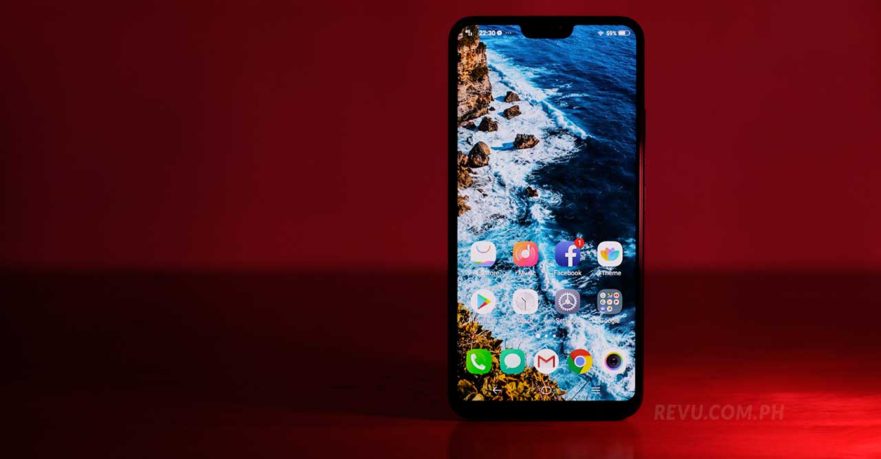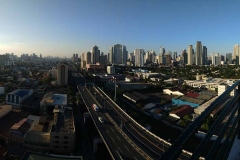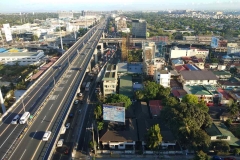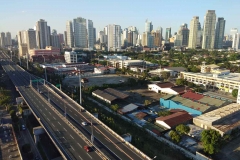Vivo is back in the spotlight with the obviously Apple iPhone X-inspired Vivo V9, ending weeks of teasing and speculation. The V9 is the sequel to the V7 (or V7+?), which was announced in the Philippines and in other markets last November.
SEE ALSO: Vivo V7 review: A great value-for-money smartphone?
Obviously, four months isn’t a long time. But the short upgrade cycle isn’t owed to the company trying to milk consumers for as much as it can. Vivo simply wanted to do better. And, by large, it has done so. The Vivo V9 is a nicer outing that rights the shortcomings of its predecessor.
It’s nicer-looking, bigger, faster, has cameras that can pull off fancier tricks, and fresh-from-the-oven Android 8.1 Oreo baked into the hardware. Vivo also touts numerous improvements on the software level, as well as artificial-intelligence capabilities, that make the phone more functional and easier to use.
READ ALSO: Vivo V7+ review: Ushering selfie phones into a borderless future
The most important addition is the notch display that extends edge-to-edge, 6.3 inches across from tip to tip, over black bezels that are just the bare minimum. The new, mirror-finished Piano Black color option — which is the unit you see in the photos — is a welcome breath of fresh air, if you don’t mind the smudginess of plastic.
The phone does include a case in the box. It provides some grip to the body, at the expense of hiding the beauty of that high-gloss finish and those curves around the edges of the outer shell. The case, it seems, doesn’t get roughed up quickly.
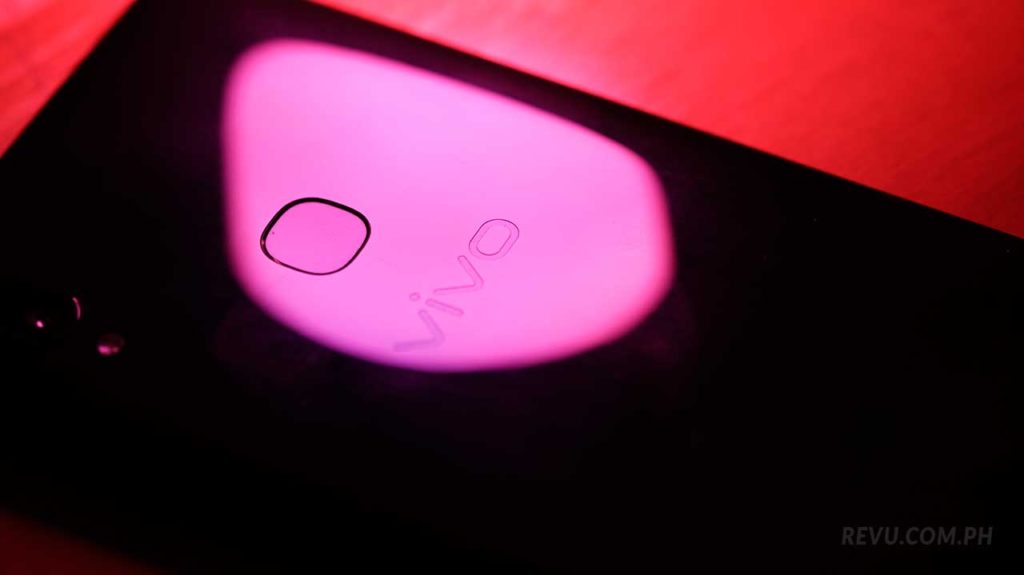
You’ll find the fingerprint reader around the V9’s back, just above the etched Vivo logo.
The gold variant once again takes on a matte look that feels similar to the surface of the V9 predecessor. Both styles represent different tastes, so we highly recommend that you check them out in person in retail stores. Regardless of color and finish, you’ll find the fingerprint reader around the back, just above the etched Vivo logo. The placement of the primary camera system with dual lenses is on the upper-left corner of the smartphone.
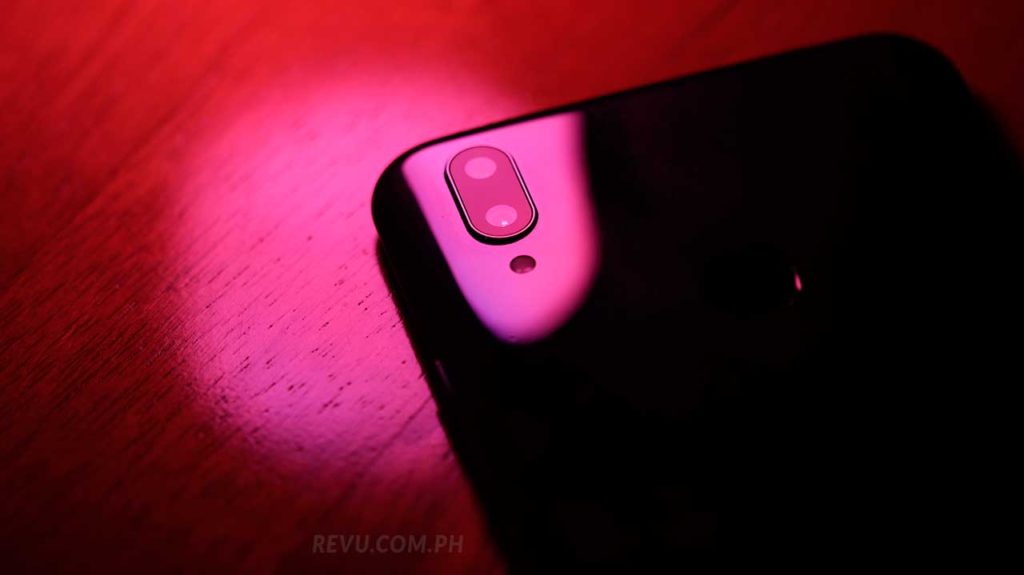
The Vivo V9’s primary camera system with dual lenses is on the upper-left corner of the smartphone, just like on the Apple iPhone X.
As for the handling, the Vivo V9 remains remarkably usable with one hand in spite of its larger screen. We were able to wrap our fingers around our unit on the two sides and operate it without a lot of conscious effort.
By taking inspiration from the anniversary iPhone, Vivo was able to design a phablet-sized phone that’s only slightly taller than the compact V7 and about the same size as the V7+. Just a couple of years ago, any mobile device with a 6-inch or bigger touchscreen would fall under the tablet category, no discussion necessary. But now? We have devices like the V9 that take an aggressive stand against screen borders.
The cutout at the top houses the front camera, earpiece speaker, notification indicator, and proximity and light sensors, where it makes sense to put them. The screen, we’re told, takes up 90 percent of the front face, which ticks off what most phones could only dream of achieving.
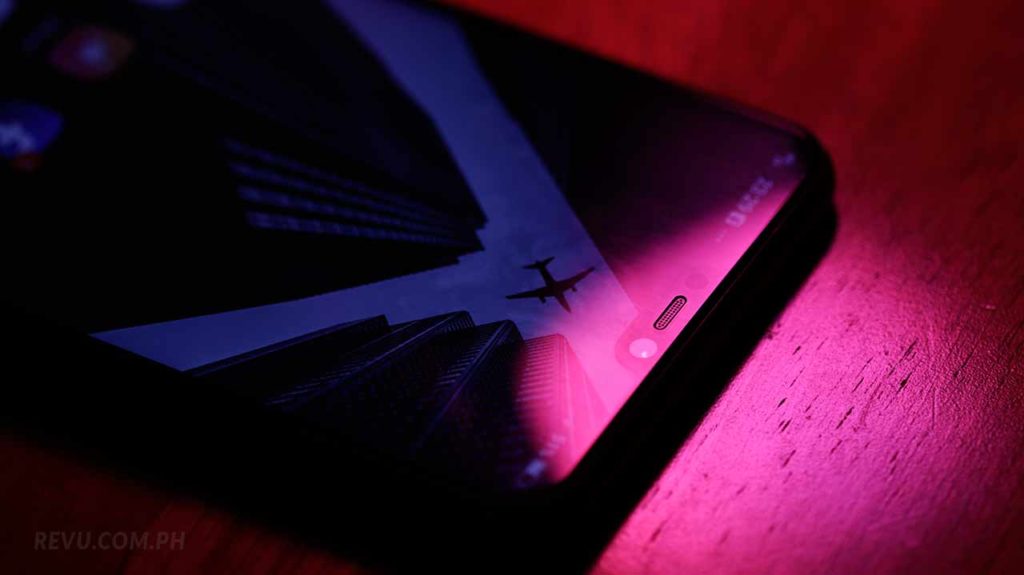
The Vivo V9’s notch houses the front camera, earpiece speaker, notification indicator, and proximity and light sensors.
There’s also the price tag to keep in mind. Vivo is quoting P17,990 — or an estimated $344 — at launch, making it considerably more expensive than the V7’s P14,990 ($287) asking price when it hit the stage for the first time in the Philippines. That notch display, it appears, isn’t cheap to produce even in mass quantities.
But the biggest story here is Vivo looking at what Apple has done with the iPhone X to increase the overall footprint of the panel while attempting to eliminate distracting bezels altogether and saying, “Let’s do the same.”
The company claims the V9 will offer the most immersive viewing experience imaginable, and we tend to agree. Outside of premium choices like (ahem) the Apple iPhone X and the Samsung Galaxy S9, this is the best device we’ve reviewed for viewing content on YouTube. When videos play in landscape mode — with the picture touching the edges of the display — this phone just pulls you in, and begs you to stare at it all day.
SEE ALSO: Night shots: Samsung Galaxy S9+ vs Apple iPhone X
It’s sharp enough at 2,280 x 1,080 pixels, leading to an aspect ratio of 19:9. It’s an upgrade over the 1,440 x 720, 18:9 screens of the Vivo V7 and V7+, which people found to be technically inferior compared to their full-resolution rivals.
Picture quality is good overall. Colors are accurately depicted for the most part. Because of the cooler tone in the panel, however, some colors might appear soft. Contrast and black levels are satisfactory. Brightness is okay, too, enough to make our unit perfectly usable outdoors during daylight hours.
Big and immersive as anything short of what tablets offer, the panel — when it functions as intended, running in its native resolution — makes for a media powerhouse. However — and do note this is a big asterisk — not all Android apps are optimized to take advantage of notch phones.
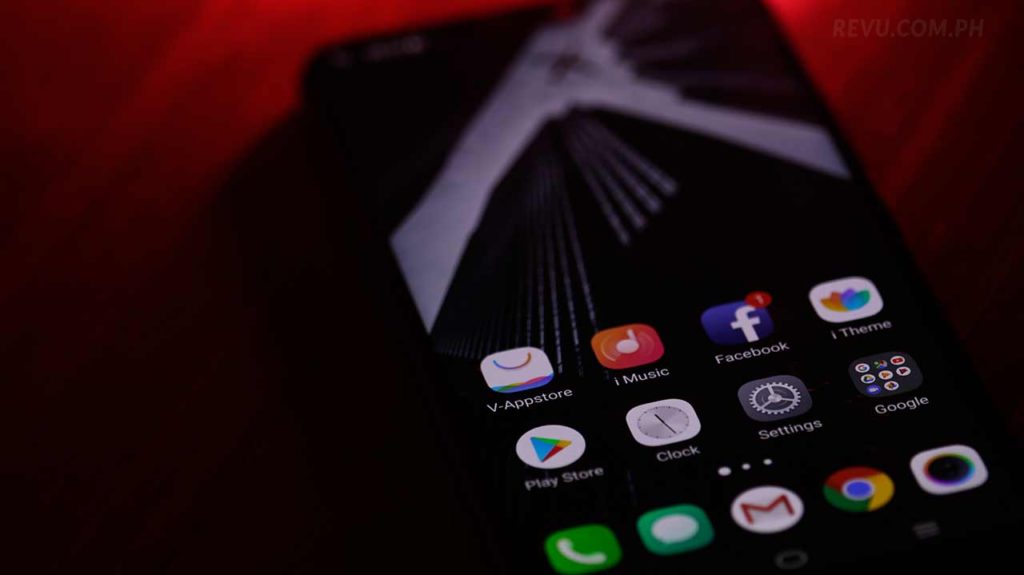
The Vivo V9’s panel makes for a media powerhouse. However, not all Android apps are optimized to take advantage of notch phones. Google will apparently fix this with Android P.
Most video services, Netflix and NBA League Pass included, don’t support them. None of the games we’ve tested so far can actually run from edge to edge and top to bottom in horizontal mode. The issue isn’t limited to the V9, mind you. It permeates the ranks of all notch phones.
Google will apparently fix this problem with Android P, the next Android update. But it’s still up to developers to get their apps running flawlessly on cutout displays. The onus is also on manufacturers like Vivo to push out Android P as early as possible.
Meanwhile, every app we’ve tried has worked just fine when holding the phone vertically.
READ ALSO: NBA 2K18 for Android and iOS: Can your phone run it?
As for the internals, there’s an octa-core Qualcomm Snapdragon 626 processor at the helm, coupled with 4GB of RAM and 64GB of built-in memory, which can be upgraded with a microSD card. Adding more memory doesn’t mean losing the Vivo V9’s dual-SIM capabilities, thanks to the presence of the triple-card tray.
Compared to the Snapdragon 625, which is a popular choice in this segment, the Snapdragon 626 sees slightly better performance from its Cortex-A53 cores, clocking in at 2.2GHz.
Both chipsets share the same GPU — the Adreno 506 — and are manufactured using the 14nm process. All this to say that the 626 is faster on paper, but probably not as much as you might expect. It is a solid chip, though, and an upgrade over the Snapdragon 450 inside the V7 and V7+.
What about in practice? Well, we’ve found our unit to be plenty responsive enough in the different use cases we’ve thrown at it so far. You’ll be able to play graphically demanding modern games, such as NBA 2K18 and PUBG Mobile, on medium to high detail, to a satisfactory smoothness.
The Vivo V9 is responsive enough in the different use cases we’ve thrown at it so far. You’ll be able to play graphically demanding modern games, such as NBA 2K18 and PUBG Mobile, on medium to high detail, to a satisfactory smoothness.
Game Mode is built into the Vivo V9 as well, allowing games to run with minimal distractions. It even lets you easily answer calls or reject those from numbers not added on your whitelist entirely. There’s also the option to compress the default keyboard to one side of the screen so you can type more comfortably while preoccupied with a game.
High-definition video playback is without hiccups. The audio spilling from the lone speaker at the bottom is loud and clear when it needs to be.
SEE ALSO: PUBG Mobile now available. The Android and iOS requirements
Kudos also to Vivo for making the user interface pleasing to the eye and buttery smooth to navigate. The Quick Settings screen can be accessed by swiping up from the bottom of the display like you would on an iPhone or iPad. This is another feature lifted from Apple’s playbook, even though it makes perfect sense to be included on a big-screen device like the V9.
And yet there are more iPhone X-styled elements to be found in the interface — wallpapers and icons being the most obvious. Additionally, Vivo offers navigation gestures you can enable in the settings window. You can lift the phone to wake the screen and unlock it using the face-unlock feature as well.
The Quick Settings screen can be accessed by swiping up from the bottom of the display like you would on an iPhone or iPad, a feature lifted from Apple’s playbook. There are more iPhone X-styled elements to be found in the interface — wallpapers and icons being the most obvious.
The sealed battery is rated at 3,260mAh, a bit more than the 3,000mAh unit the V7 carries. On most days, it would take us a day to empty it from a full charge, while charging to full battery via the microUSB port on the base of the device would take us roughly two hours using the supplied 10-watt wall charger and cable.
Elsewhere, the camera module at the back is made up of a 16-megapixel sensor with f/2.0 aperture and a 5-megapixel secondary sensor that feeds depth information to the primary camera for portrait shooting. You can adjust the focus after the shot, and you can tone down the intensity of the blur while taking the photo or afterwards.
[sciba leftsrc=”https://www.revu.com.ph/wp-content/uploads/2018/03/Vivo-V9-sample-photo-bokeh-review-Revu-Philippines.jpg” leftlabel=”With bokeh effect” rightsrc=”https://www.revu.com.ph/wp-content/uploads/2018/03/Vivo-V9-sample-photo-no-bokeh-review-Revu-Philippines.jpg” rightlabel=”Without bokeh effect” mode=”horizontal” width=””]Resized photos taken with the Vivo V9: With bokeh effect vs without bokeh effect
Photos taken with the main system look good in bright conditions, but lose detail in dim lighting. The focus latches onto subjects quickly and accurately. Shutter lag is notably negligible in most circumstances. The V9 supports video capture at super-sharp 4K resolution, though the quality isn’t going to compare to those captured by dedicated cameras we have today.
Just some sample resized pictures captured on the Vivo V9
The selfie camera has 24 megapixels — just as many as those on the front of the Vivo V7 and V7+. Likewise, the aperture goes down to f/2.0. In terms of hardware, not much has changed from four months ago.

Cropped selfies taken with the Vivo V9: From a shot with Face Beauty turned off to one with Face Beauty Level 1 turned on

Using the Vivo V9’s selfie-light effect

Our friend Adam Parnala playing with the Vivo V9’s AR stickers

Sample resized group selfie shot inside a hotel ballroom on the Vivo V9
What is most important is the evolution that has come on the software level, as the V9 uses artificial intelligence and machine learning to identify the user’s age and skin tone for a more natural-looking image. Software smarts are also relied upon when taking portrait shots; results tend to look serviceable, not too over-processed.
You can use the front camera to shoot HD video, or even 4K footage if you want to make your amateur videos look sharper on your expensive TV or monitor.
Final thoughts
We really like the Vivo V9 for how immersive it can be in spite of its manageable size. This is the company’s first true foray into the world of mainstream devices with almost zero bezels all around, so it is not without its share of complications. But all things considered, the V9 manages to impress — and look good doing it.
In the Philippines, the Vivo V9 is available for preorder until April 5. Details here.
Specs of the Vivo V9 (price: P17,990 or around $344)
- 6.3-inch LCD display; 2,280 x 1,080 resolution (19:9)
- Qualcomm Snapdragon 626 pocessor
- 4GB RAM
- 64GB expandable storage
- Dual rear cameras (16MP + 5MP) with LED flash
- 24M-megapixel front camera
- Rear-mounted fingerprint sensor
- 3,260mAh battery
- Android 8.1 Oreo
Share this Post

